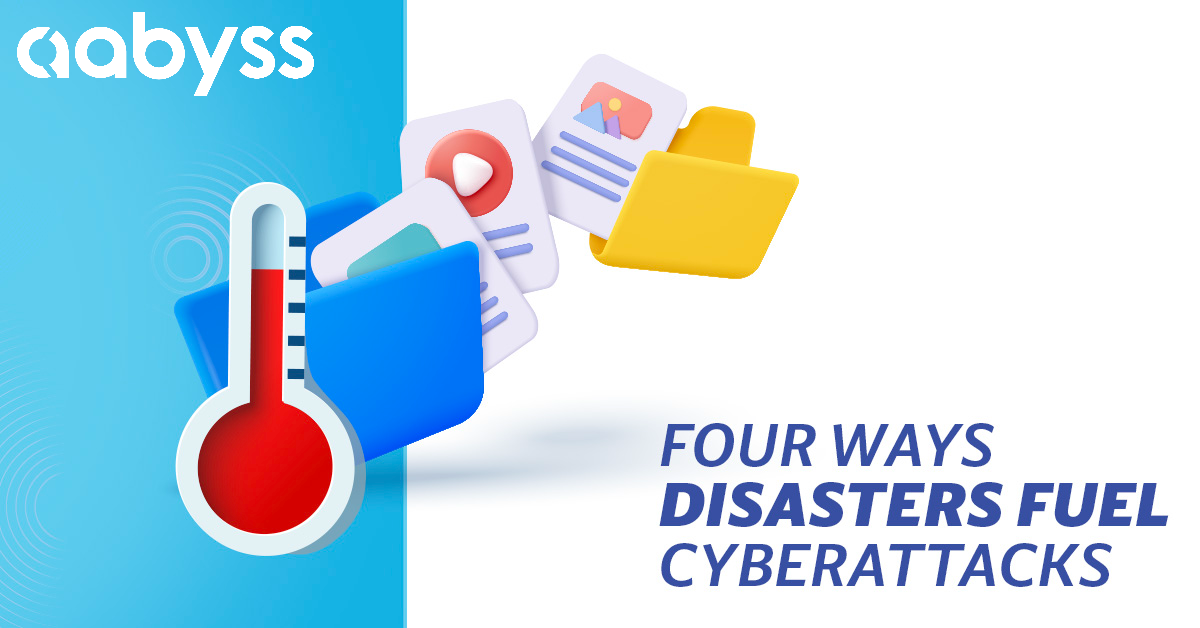Discover how disasters can pave the way for cyberattacks with these four devious ways.
As a business owner, you’re likely facing several challenges in today’s technology-driven world. However, unexpected disasters can further strain your organisation and create opportunities for cybercriminals to launch devastating attacks, exacerbating the chaos caused by such events.
As a business leader, it’s crucial to prioritise disaster preparedness for both physical resilience and digital defence. Understanding how disasters can fuel cyberattacks and taking proactive steps to safeguard your business against these deceptive threats is essential. In this article, we’ll explore four significant ways disasters can amplify cyber threats and offer helpful strategies to bolster your cybersecurity posture in the face of adversity.
Diverting attention and resources.
During a disaster, the focus is primarily on safety and recovery, which can decrease attention and resources allocated towards cybersecurity measures. We must address this critical issue to look into essential updates and monitoring. Consequently, IT systems and networks become vulnerable to intrusion, allowing cybercriminals to compromise sensitive data and disrupt operations.
It is vital to comprehend how disasters can exacerbate cyber threats.
In order to tackle this problem, it is crucial to establish a dedicated team responsible for monitoring and maintaining cybersecurity, even during times of crisis. Implementing automated security systems that can scan for vulnerabilities and apply necessary patches continuously is also advisable.
Taking advantage of emotions such as fear, urgency, chaos, and uncertainty.
The risk of cyberattacks can be minimised by prioritising cybersecurity, even in challenging circumstances. Disasters often create an environment of fear, urgency, chaos, and uncertainty, which cybercriminals can exploit. They may launch targeted attacks, such as deceptive emails or fraudulent websites, taking advantage of people’s sense of urgency and need for quick solutions. Cybercriminals can gain unauthorised access to critical systems by tricking people into disclosing sensitive information.
It is essential to educate your employees on the tactics used in phishing attacks and social engineering scams to combat these cyber threats. Your team should be trained to identify warning signs, such as suspicious emails or requests for sensitive information. Encourage a culture of scepticism and verification, where employees confirm the authenticity of requests before sharing confidential data. By creating a vigilant and informed workforce, you can strengthen your defence against cybercriminals who seek to exploit fear and uncertainty. Disasters can cause significant damage to your critical infrastructure, which can compromise your cybersecurity measures. Destruction of servers, routers or firewalls can weaken your defence mechanisms, allowing cybercriminals to exploit security gaps. Ensuring that your critical infrastructure has backup and disaster recovery in place is essential to address this challenge. Regularly back up your data, store it securely off-site or in the cloud, and test the restoration process to ensure it works smoothly. Implement robust disaster recovery and business continuity plans, including provisions for cybersecurity.
Causing harm to critical infrastructure.
Maintaining resilient infrastructure and regularly testing backup and recovery processes are crucial to minimise the impact of infrastructure damage on your cybersecurity. Cybercriminals often take advantage of the trust associated with relief organisations and government agencies in the aftermath of a disaster by impersonating them and deceiving victims through phishing emails, messages or calls. To protect yourself from such scams, encourage your employees to verify the authenticity of any communication received during a disaster and advise them to contact the organisation or agency through known, trusted channels to confirm the legitimacy of any requests.
Deception and impersonation.
To safeguard yourself from scams, it's important to take the following precautions:
- Encourage your staff to confirm the legitimacy of any messages they receive during a disaster.
- Advise them to independently contact the organisation or agency through trusted channels to validate any requests.
- Implement comprehensive security awareness training programs that educate employees on common impersonation tactics and effective reporting methods.
By fostering a culture of vigilance and verification, you can shield against cybercriminals' impersonation and deception techniques.
Take action now to protect your business.
Prioritising disaster preparedness and implementing the above-highlighted measures are crucial to navigate today’s ever-evolving technology landscape and safeguard your business. We’re here to help fortify your disaster preparedness and cybersecurity efforts if you need expert guidance. Contact us today to proactively protect what you’ve worked hard to build.





Leave a Comment